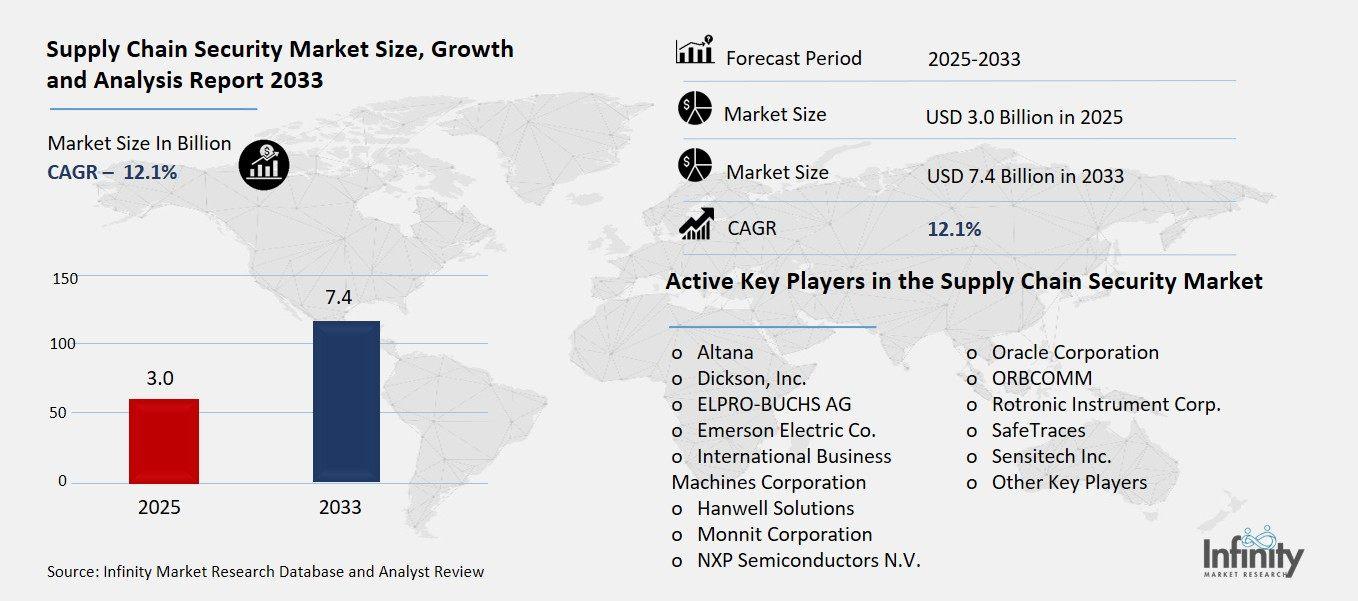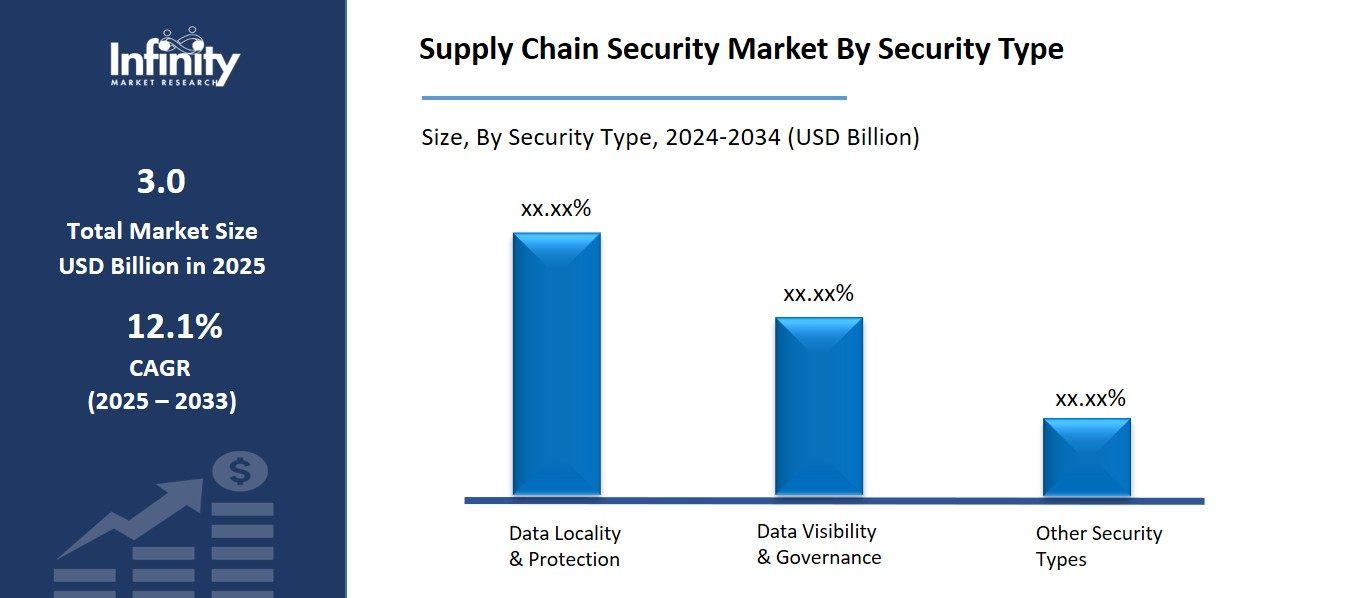
🔐 Secure Payment Guaranteed
Safe checkout with trusted global payment methods.
🌟 Why Choose Infinity Market Research?
At Infinity Market Research, we dont just deliver data — we deliver clarity, confidence, and competitive edge.
In a world driven by insights, we help businesses unlock the infinite potential of informed decisions.
Here why global brands, startups, and decision-makers choose us:
Industry-Centric Expertise
With deep domain knowledge across sectors — from healthcare and technology to manufacturing and consumer goods — our team delivers insights that matter.
Custom Research, Not Cookie-Cutter Reports
Every business is unique, and so are its challenges. Thats why we tailor our research to your specific goals, offering solutions that are actionable, relevant, and reliable.
Data You Can Trust
Our research methodology is rigorous, transparent, and validated at every step. We believe in delivering not just numbers, but numbers that drive real impact.
Client-Centric Approach
Your success is our priority. From first contact to final delivery, our team is responsive, collaborative, and committed to your goals — because you re more than a client; you re a partner.
Recent Reports
Global Myopia Control Lenses Market Report 2025-33
Hyaluronic Acid-based Dermal Fillers Market Report
Supply Chain Security Market
Supply Chain Security Market Global Industry Analysis and Forecast (2025-2033) by Component (Hardware, Software, and Services), Security Type (Data Locality & Protection, Data Visibility & Governance, and Other Security Types), Enterprise Type (Small & Medium-sized Enterprises and Large Enterprises), Industry Vertical (Healthcare & Pharmaceuticals, Retail & E-commerce, Automotive, Transportation And Logistics, Manufacturing, and Other Industry Verticals), and Region
Jul 2025
Information and Communication Technology
Pages: 138
ID: IMR2114
Supply Chain Security Market Synopsis
The Global Supply Chain Security Market was valued at USD 2.6 billion in 2024 and is expected to grow from USD 3.0 billion in 2025 to USD 7.4 billion by 2033, reflecting a CAGR of 12.1% over the forecast period.
Supply Chain Security market is aimed at protecting the global supply networks against such risks as cyber threats, fake products, theft, geo-political disruptions, and natural calamities. Due to the increasingly globalised and intricate nature of supply chains, transparency, integrity, and resilience within supply chains is rapidly becoming an operational area of focus on the part of organisations. Such solutions on this market include risk management software, asset tracking with the use of the Internet of Things, blockchain as a traceability tool, surveillance, and logistics and supply chain system-specific cybersecurity. The factors behind the growth include the growing number of data breaches, the ever-growing regulatory burden, and a real-time view across the supply chain.

Supply Chain Security Market Driver Analysis
Rising Cybersecurity Threats in Logistics
Ransomware, data breaches, and phishing campaigns targeting digital supply chains have grown in popularity to the extent that they are regarded as significant concerns to businesses across the globe. The more such chains are linked and digitized, the more they are prone to various cyber threats to critical facilities such as inventory control, order fulfillment, and logistics monitoring. Supply chain hacks and attacks mainly relate to vulnerable points in the third party suppliers or unsecured end points which might inadvertently cause the whole chain to be infiltrated. Such events may cause the loss of profit, halt in business operations and hurt the image of the brand. On the same note, enterprises are focusing on making investments on sophisticated cybersecurity tools such as threat detection tools, encryption, user access control, and real-time monitoring mechanisms to protect their supply chain infrastructures to guarantee business continuity.
Supply Chain Security Market Restraint Analysis
High Implementation and Maintenance Costs
Small and medium-sized enterprises (SMEs) have a tendency to experience difficulty in using high-end supply chain security technologies because of implementation, infrastructure costs, and systems integration, which are highly expensive at the outset. In contrast to large companies, which have special IT funds and capabilities, SMEs usually work in terms of low financial flexibility, so it would not be an easy task to allocate financial resources to such a solution as blockchain tracking, AI-based risk assessment, or highly structured cybersecurity systems. Moreover, there is a continuous overhead of maintenance costs, software upgrade costs and costs incurred to pay trained staff, which puts pressure on their budgets. Consequently, a large number of SMEs have remained to use the traditional or manual security practices that might not suffice in the supply chain environment that is increasingly becoming complex and threat prone.
Supply Chain Security Market Opportunity Analysis
Increasing Demand in Developing Economies
Emerging markets are rapidly industrializing and transforming digitally, which are leading to creation of substantial growth opportunities to the supply chain security market. The countries in Asia, Africa, and Latin America are expanding their manufacturing capabilities, adopting e-commerce and modernizing infrastructure which makes supply chains more complex and huge. With this change, it also comes with an increased concern of ensuring there is a strong security system to prevent various threats to include cyberattacks, theft, counterfeit products and failure to comply with regulations. More so, the governments in these regions are enforcing more policies in the field of trade and protection of data which has further increased the need of security solutions.
Supply Chain Security Market Trend Analysis
Focus on End-to-End Visibility and Risk Intelligence
The full visibility of all levels of the supply chain is the tool that companies are now putting greater importance on because blind spots, particularly on lower-level suppliers, carry great potential risks. The visibility increases allow organizations to track all the processes in the supply chain in real time, including the raw material acquisition and the delivery of finished goods. Such cohesive monitoring allows detecting the areas of a bottleneck, reporting compliance, and finding the peculiarities or threats that may come along, like delivery deficient, cyber-attack/hack, or counterfeiting attempt before it becomes a serious problem. This transparency is being obtained through technologies, including AI-powered analytics and IoT-based tracking, and blockchain.
Supply Chain Security Market Segment Analysis
The Supply Chain Security Market is segmented on the basis of Component, Security Type, and Enterprise Type.
By Component
o Hardware
o Software
o Services
By Security Type
o Data Locality & Protection
o Data Visibility & Governance
o Other Security Types
By Enterprise Type
o Small & Medium-sized Enterprises
o Large Enterprises
By Industry Vertical
o Healthcare & Pharmaceuticals
o Retail & E-commerce
o Automotive
o Transportation And Logistics
o Manufacturing
o Other Industry Verticals
By Region
o North America (U.S., Canada, Mexico)
o Eastern Europe (Bulgaria, The Czech Republic, Hungary, Poland, Romania, Rest of Eastern Europe)
o Western Europe (Germany, UK, France, Netherlands, Italy, Russia, Spain, Rest of Western Europe)
o Asia Pacific (China, India, Japan, South Korea, Malaysia, Thailand, Vietnam, The Philippines, Australia, New-Zealand, Rest of APAC)
o Middle East & Africa (Turkey, Bahrain, Kuwait, Saudi Arabia, Qatar, UAE, Israel, South Africa)
o South America (Brazil, Argentina, Rest of SA)
By Component, Software Segment is Expected to Dominate the Market During the Forecast Period
The components discussed in this research study, the software segment is expected to account for the largest market share of supply chain security market in the forecast period. The supply chain security market is expected to have the highest market share of the software segment as more organizations are seeking digital solutions that offer real time visibility, predictive analytics, threat identification, and compliance solutions. With a rise in the complexity and global spread of supply chains, organizations are making further use of cloud-based and AI software platforms to track their activities, risks, and data integrity at each level of the supply chain. The solutions also support automation, easy integration with the current enterprise (such as ERP and TMS) and scale, which also makes it cost-effective and versatile to businesses of all scales.
By Security Type, the Data Visibility & Governance Segment is Expected to Held the Largest Share
The data visibility & governance segment is likely to dominate the market. With operations becoming highly distributed in the supply chain, as an effort to gain a better understanding of data movement among third-party vendors and networks, and to ensure correct data governance processes, it is important to tackle these security threats like data breaches, counterfeit products, and operational interruptions. In this segment, solutions are found that will support organizations in tracing the movement of goods and information, in addition to control of access, and enforcement of compliance policies across all the chains of supply.

By Enterprise Type, the Large Enterprises Segment is Expected to Held the Largest Share
The large enterprises segment is expected to dominate the market during the forecast period due to their higher adoption of advanced supply chain security solutions and greater financial and technological resources. Such organizations generally have a geographically-dispersed scale of operations, and they are more prone to disruption/cyber risks/compliance issues, since they have multi-tiered supply chains. They, therefore, spend much on end-to-end security systems, such as round-the-clock tracking, machine intelligence to identify threats, and traceability via blockchain, to be transparent, keep their assets safe, and sustain their operations.
By Industry Vertical, the Automotive & Transportation Segment is Expected to Held the Largest Share
The transportation and logistics segment is anticipated to hold the largest share of the supply chain security market during the forecast period. The need to secure cargo, infrastructure, and information in multi-national, complicated supply chain networks has led to this dominance because logistics networks are vital to international trade. The threats to the transport and logistics industry are constant: it is cargo theft, shipping delays, route schedules and firewall attacks on the management system of fleets and monitoring devices. Consequently, they are splashing out on high-end security tools such as global positioning system/radio frequency identification tracking, real time visibility systems, access controls, and threat warning systems to guarantee a secure and smooth operation.
Supply Chain Security Market Regional Insights
North America is Expected to Dominate the Market Over the Forecast period
North America is projected to dominate the supply chain security market throughout the forecast period, owing to the region's strong technological infrastructure, early adoption of advanced security solutions, and the presence of major players in cybersecurity and supply chain management. Increasingly, logistics, manufacturing, and critical infrastructure are experiencing a wave of cyberattacks, and the public and private sector are investing in ensuring secure supply chain networks within their organizations. Also, stern regulatory measures, including CISA rules, NIST standards, and trade compliance regulations enforce the adoption of strong security mechanisms. The spreading of such technologies as blockchain, IoT, AI, and cloud-based platforms use during logistics and purchase operations also makes its own contribution to the leadership of the region in the given market.
Recent Development
In June 2022, Emerson Electric Co. introduced its new ASCO Series 641, 642, and 643 Aluminum Filter Regulators, engineered to enhance process efficiency and minimize unplanned downtime across a variety of industrial applications.
In May 2023, NXP Semiconductors N.V. unveiled its new i.MX 91 application processor series, designed to offer a robust combination of advanced features, enhanced security, and energy-efficient performance for the next generation of Linux-based IoT and industrial applications.
Active Key Players in the Supply Chain Security Market
o Altana
o Dickson, Inc.
o Emerson Electric Co.
o International Business Machines Corporation
o Hanwell Solutions
o Monnit Corporation
o NXP Semiconductors N.V.
o Oracle Corporation
o ORBCOMM
o Rotronic Instrument Corp.
o SafeTraces
o Sensitech Inc.
o Other Key Players
Global Supply Chain Security Market Scope
|
Global Supply Chain Security Market | |||
|
Base Year: |
2025 |
Forecast Period: |
2025-2033 |
|
Historical Data: |
2017 to 2024 |
Market Size in 2024: |
USD 2.6 Billion |
|
Market Size in 2025: |
USD 3.0 Billion | ||
|
Forecast Period 2025-33 CAGR: |
12.1% |
Market Size in 2033: |
USD 7.4 Billion |
|
Segments Covered: |
By Component |
· Hardware · Software · Services | |
|
By Security Type |
· Data Locality & Protection · Data Visibility & Governance · Other Security Types | ||
|
By Enterprise Type |
· Small & Medium-sized Enterprises · Large Enterprises | ||
|
By Industry Vertical |
· Healthcare & Pharmaceuticals · Retail & E-commerce · Automotive · Transportation And Logistics · Manufacturing · Other Industry Verticals | ||
|
By Region |
· North America (U.S., Canada, Mexico) · Eastern Europe (Bulgaria, The Czech Republic, Hungary, Poland, Romania, Rest of Eastern Europe) · Western Europe (Germany, UK, France, Netherlands, Italy, Russia, Spain, Rest of Western Europe) · Asia Pacific (China, India, Japan, South Korea, Malaysia, Thailand, Vietnam, The Philippines, Australia, New-Zealand, Rest of APAC) · Middle East & Africa (Turkey, Bahrain, Kuwait, Saudi Arabia, Qatar, UAE, Israel, South Africa) · South America (Brazil, Argentina, Rest of SA) | ||
|
Key Market Drivers: |
· Rising Cybersecurity Threats in Logistics | ||
|
Key Market Restraints: |
· High Implementation and Maintenance Costs | ||
|
Key Opportunities: |
· Increasing Demand in Developing Economies | ||
|
Companies Covered in the report: |
· Altana, Dickson, Inc., ELPRO-BUCHS AG, Emerson Electric Co., and Other Key Players. | ||
📘 Frequently Asked Questions
1. What would be the forecast period in the Supply Chain Security Market Research report?
Answer: The forecast period in the Supply Chain Security Market Research report is 2025-2033.
2. Who are the key players in the Supply Chain Security Market?
Answer: Altana, Dickson, Inc., ELPRO-BUCHS AG, Emerson Electric Co., and Other Key Players.
3. What are the segments of the Supply Chain Security Market?
Answer: The Supply Chain Security Market is segmented into Component, Security Type, Enterprise Type, and Regions. By Component, the market is categorized into Hardware, Software, and Services. By Security Type, the market is categorized into Data Locality & Protection, Data Visibility & Governance, and Other Security Types. By Enterprise Type, the market is categorized into Small & Medium-sized Enterprises and Large Enterprises. By Industry Vertical, the market is categorized into Healthcare & Pharmaceuticals, Retail & E-commerce, Automotive, Transportation And Logistics, Manufacturing, and Other Industry Verticals. By region, it is analyzed across North America (U.S.; Canada; Mexico), Eastern Europe (Bulgaria; The Czech Republic; Hungary; Poland; Romania; Rest of Eastern Europe), Western Europe (Germany; UK; France; Netherlands; Italy; Russia; Spain; Rest of Western Europe), Asia-Pacific (China; India; Japan; Southeast Asia, etc.), South America (Brazil; Argentina, etc.), Middle East & Africa (Saudi Arabia; South Africa, etc.).
4. What is the Supply Chain Security Market?
Answer: Supply Chain Security market is defined as the business sector dealing with safeguarding the integrity, reliability, and resilience of the supply chains against multiple threats and disruptions. Such threats might be cyberthreats, theft, counterfeit, terrorism, natural calamities and geopolitical crises, which might threaten the transfer of goods, data and services. Technologies and services of the market include a variety of documentation standards, cybersecurity services, surveillance and monitoring, blockchain in traceability, GPS and RFID tracking, and compliance management.
5. How big is the Supply Chain Security Market?
Answer: The Global Supply Chain Security Market was valued at USD 2.6 billion in 2024 and is expected to grow from USD 3.0 billion in 2025 to USD 7.4 billion by 2033, reflecting a CAGR of 12.1% over the forecast period.


🔐 Secure Payment Guaranteed
Safe checkout with trusted global payment methods.
🌟 Why Choose Infinity Market Research?
- Accurate & Verified Data:Our insights are trusted by global brands and Fortune 500 companies.
- Complete Transparency:No hidden fees, locked content, or misleading claims — ever.
- 24/7 Analyst Support:Our expert team is always available to help you make smarter decisions.
- Instant Savings:Enjoy a flat $1000 OFF on every report.
- Fast & Reliable Delivery:Get your report delivered within 5 working days, guaranteed.
- Tailored Insights:Customized research that fits your industry and specific goals.




